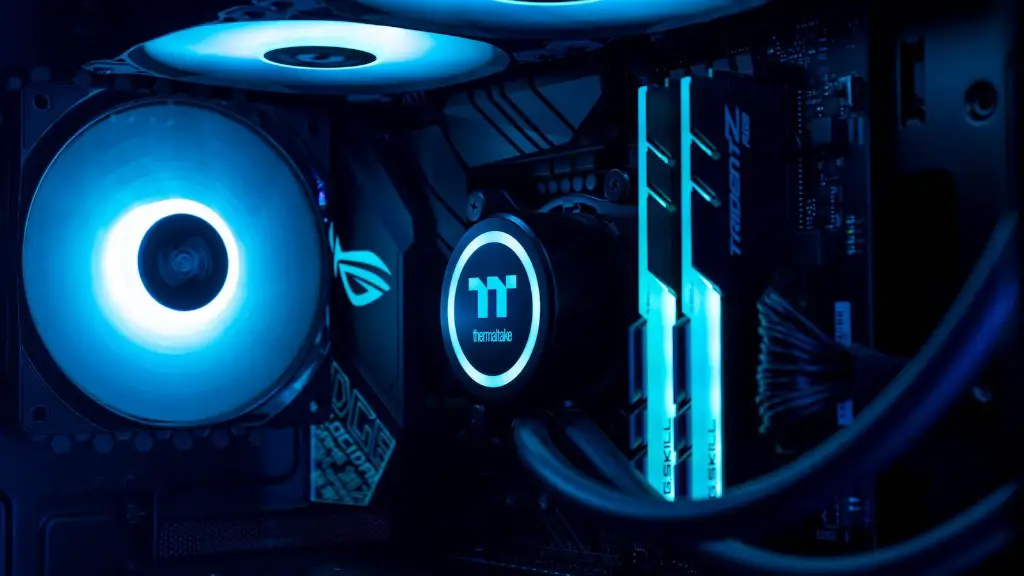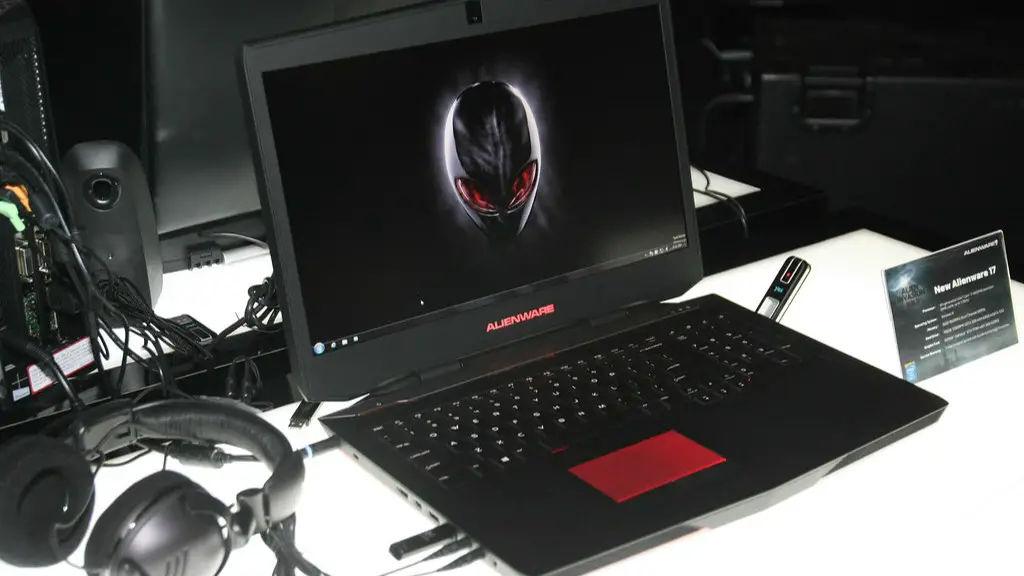It is possible to use a TV as a gaming monitor, but depending on the technical features of the TV, it could provide a substandard gaming experience or be outright unsuitable. Modern TVs often come with high-resolution screens, elevated refresh rates and adaptive sync technology, making them perfectly capable of providing a smooth gaming experience with an optimal input latency. However, they may lack features such as adjustable picture settings, lack of ports, and high image persistence.
A good TV monitor for gaming should be equipped with a refresh rate of at least 60 Hz, and preferably 120Hz or even higher. With the added benefit of a larger screen size and better image quality, such TVs generally provide a stunning gaming experience. Built-in FreeSync technology makes sure that the game-frame rate matches the TV’s actual refresh rate, which results in a smooth and consistent gaming experience with no stuttering or tearing.
Aside from the resolution, refresh rate, and adaptive sync technology, other key features that should be considered when purchasing a gaming TV are its response time, color accuracy, VESA standard mount, and input lag. Response time should be as low as possible, since it is important to avoid ghosting. Accuracy in regards to the colorings should be of utmost importance, as the image can look washed-out or oversaturated otherwise. VESA standard mountable TVs provide a great way to mount the TV on the wall in order to save space, while reducing the lag in the input signals even further.
However, it is important to note that with TVs, there is often a tradeoff between picture quality, size, and price. Purchasing a low-cost TV could mean sacrificing important features such as input lag, motion blur, or color accuracy, which might make it an unsuitable gaming monitor. Therefore, it is important to carefully consider the TV’s technical specifications before making a purchase for gaming.
In conclusion, when it comes to gaming on a TV, it is important to review the TV’s technical specifications in terms of resolution, refresh rate, response time, and other features. With the right features, a TV can provide an excellent gaming experience – however, do not forget to carefully consider the tradeoff between picture quality, size, and price.
Can a TV With 4K Resolution Be Used as a Gaming Monitor?
A 4K resolution, also known as Ultra High Definition (UHD) is a great option for gamers who are looking for an immersive gaming experience. The combination of a big screen and ultra high definition provides a stunningly detailed picture, which can truly make games come to life. However, it is important to remember that using a UHD TV as a gaming monitor requires a combination of a powerful gaming rig and a TV with low-latency input. Many modern TVs now offer speeds up to 120Hz or higher, which makes them more suitable for gaming than ever before.
To obtain the best results, it is recommended to opt for a 4K resolution with a minimum refresh rate of 60Hz, although higher refresh rates are preferable. Also, keep in mind that the faster the refresh rate, the more power you will need in order to run games in 4K resolution. Furthermore, 4K TVs can often have a higher input lag than standard HD TVs. Therefore, if you are going for the most responsive gaming experience, you should ensure that the TV’s input lag is as low as possible.
In addition to having a powerful gaming rig and low input lag, it is also important to consider the UHD TV’s other features. Look for a TV that has good viewing angles, excellent gray uniformity, and wide color gamut support to get the most out of your games. Although 4K TVs can be expensive, the combination of a large screen and a stunningly detailed image can make them worth the price in the long run.
Overall, 4K TVs can be used as gaming monitors, provided they meet the rig’s technical requirements and have features that enhance the gaming experience. However, keep in mind that these TVs can be expensive, require a powerful gaming rig, and can have a higher input lag compared to standard HD TVs.
What are the Pros and Cons of Using a TV for Gaming?
Using a TV for gaming can provide some advantages, such as being able to use a larger screen and a higher resolution than with a traditional gaming monitor. Additionally, modern TVs usually come with higher refresh rates, lower response times, and adaptive sync technology, which can provide a smoother and more responsive gaming experience. However, TVs also have some drawbacks, such as lacking certain gaming-oriented features, limited number of ports, and higher input lag.
One of the biggest advantages of using a TV for gaming is the bigger screen size that it provides. Games look bigger, more immersive, and can make for a more exhilarating experience. Additionally, most TVs come with UHD resolution which allows for finer details to be observed. This coupled with the bigger size allows for more immersive gaming.
Modern TVs also come with higher refresh rates and response times, which allow for an incredibly smooth gaming experience with minimal stuttering or lags. Visitors adaptive sync technology like FreeSync or G-Sync to match the number of frames presented with the refresh rate of the TV. This helps to eliminate screen tearing and minimizes input lag.
On the other hand, TVs do not come with the same adjustable picture settings that a gaming monitor typically has. Additionally, they often have limited ports compared to gaming monitors. Furthermore, they tend to have higher input lags, which can affect the responsiveness of the gaming experience.
In conclusion, using a TV for gaming can be a great way to experience games in an immersive format – given the right setup. Although there are some drawbacks, it can be a worthwhile purchase for gamers who wish to experience the most out of a game.
Which is Better for Gaming: TV or Monitor?
The debate between which is better for gaming – a TV or a monitor – is often subjective. Both TVs and monitors have certain advantages and disadvantages, and your choice will depend on your gaming preferences and your budget. While TVs generally have bigger screens, higher refresh rate, and better image quality, monitors can sometimes have a lower input latency and more gaming-oriented features.
Monitors generally have lower input lag and are better suited for competitive gaming due to their higher refresh rate and responsiveness. Additionally, most gaming monitors offer a variety of features such as adjustable viewing angles and customizable picture settings, which can provide an improved gaming experience. However, they tend to be smaller and are not as good at displaying HD content as TVs.
On the other hand, TVs often have bigger screens with a higher resolution and better image quality. Additionally, they usually have a higher refresh rate, allowing for a smoother and more consistent gaming experience. However, their input lag is typically higher than that of monitors, which can be a problem for competitive games. Besides, TVs may lack some of the more gaming-oriented features such as customizable picture settings.
Therefore, when deciding which is better for gaming – a TV or a monitor – remember to consider the size, resolution, refresh rate, input lag, and other features of your chosen device. TVs are generally better for casual gaming and can provide a more immersive experience, while monitors are better for competitive gaming due to their more responsive nature.
What Other Factors Should I Consider When Choosing a TV Monitor for Gaming?
When choosing a TV monitor for gaming, there are other factors to consider besides resolution, refresh rate, and response time. For example, the TV’s ports, HDR capabilities, and even the calibration settings can greatly enhance your gaming experience. Additionally, the TV’s built-in technologies, picture settings, and sound quality can all come into play.
One of the most important features to consider when choosing a gaming TV is its ports. Make sure to check that the TV has the necessary ports such as HDMI, USB, and DisplayPort, as these will be needed for connecting gaming consoles and other peripherals. Furthermore, modern TVs often come with 4K and HDR capabilities, which can make for a more immersive gaming experience.
In addition to ports and image quality, the calibration settings of a TV can also play a major role in the gaming experience. If a TV is not accurately calibrated, games can look washed out and lack the detail that a well-calibrated TV can provide. Additionally, make sure to check the sound quality of a TV in order to ensure a great gaming experience.
Finally, it is important to consider the TV’s built-in technologies such as ambient light sensors, voice control, and gaming-specific features. Ambient light sensors can automatically adjust the brightness of the TV’s backlight to make the picture appear brighter or darker depending on the light in the room. Some TVs also come with gaming-specific features such as gaming modes, which can optimize the picture settings for a more enjoyable gaming experience.
When choosing a TV for gaming, be sure to consider factors such as ports, calibration, built-in technologies, and sound quality. Additionally, make sure to evaluate the TV’s built-in features and gaming-specific features, as they can greatly enhance the gaming experience.



